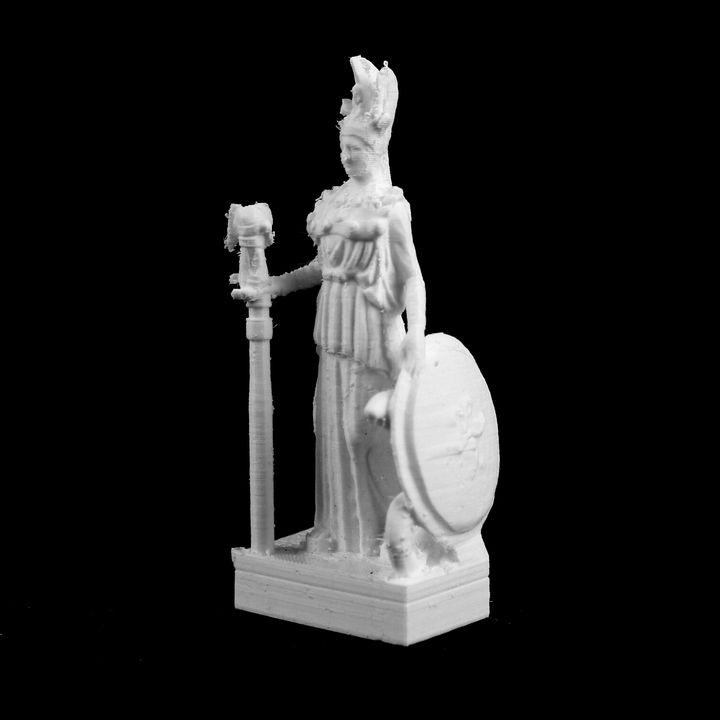
The Varvakeion Athena at The National Archaeological Museum of Athens, Greece
myminifactory
Athena Parthenos, a magnificent chryselephantine sculpture of the revered Greek goddess Athena, was crafted by Phidias and his skilled assistants in the heart of Athens. This extraordinary work of art embodies the essence of its creator, an epitome of perfection that has captivated artists for centuries. A multitude of replicas and inspired works have been created in its honor, a testament to its enduring influence. Commissioned around 447 BC, Phidias' masterpiece was initially considered one of the greatest achievements of ancient Greek artistry. Unfortunately, it fell victim to Lachares' plundering in 296 BC, as he stripped away the gold sheets to fund his troops. The bronze replacements that followed were likely gilded, preserving some semblance of its former glory. A devastating fire ravaged the Parthenon in 165 BC, but the sculpture was meticulously restored. Phidias began working on Athena Parthenos around 447 BC, an endeavor that would go on to cement his reputation as one of the most celebrated sculptors of ancient Greece. The Romans eventually removed it from the Parthenon in the 5th century AD, and its subsequent whereabouts remain a topic of ongoing debate. A detailed account of the statue's appearance can be found in the writings of the esteemed historian Pausanias: The Athena Parthenos stands proudly upright, adorned with an ivory tunic that reaches down to her feet. On her breast lies the visage of Medusa, intricately crafted from ivory. In one hand, she grasps a statue of Victory, approximately four cubits high, while the other holds a spear. At her feet rests a shield, and nearby lies a serpent, symbolizing Erichthonius. The sculpture's general appearance can be assessed through its representations on coins, miniature sculptures, votive objects, and engraved gems from various eras. Athena Parthenos exudes an aura of elegance, with her head slightly inclined forward. She stands poised, her left hand resting on an upright shield, as her weight shifts onto her right leg. Her peplos is cinched at the waist by a pair of serpents whose tails entwine at the back, while locks of hair cascade down onto her breastplate. The Nike in her outstretched right hand takes flight, its wings spread wide. Whether Phidias' original version included a support for the Nike remains a topic of discussion among art historians. The sculpture's construction involved assembling it on a wooden core, which was then covered with shaped bronze plates and removable gold sheets. Save for the ivory surfaces of Athena's face and arms, the entire structure weighed an astonishing 44 talents, equivalent to approximately 1,100 kilograms or 2,400 pounds. The Athena Parthenos embodied a significant portion of Athens' treasury. We extend our gratitude to Jerry Fisher for his remarkable scan of this breathtaking sculpture! Athena Parthenos is part of "Scan The World," a non-profit initiative conceived by MyMiniFactory, aimed at creating a digital archive of fully 3D printable sculptures, artworks, and landmarks from around the globe. This community-driven project allows everyone to access these incredible works for free. If you have interesting items to contribute, please email stw@myminifactory.com to learn more about how you can help.
With this file you will be able to print The Varvakeion Athena at The National Archaeological Museum of Athens, Greece with your 3D printer. Click on the button and save the file on your computer to work, edit or customize your design. You can also find more 3D designs for printers on The Varvakeion Athena at The National Archaeological Museum of Athens, Greece.
